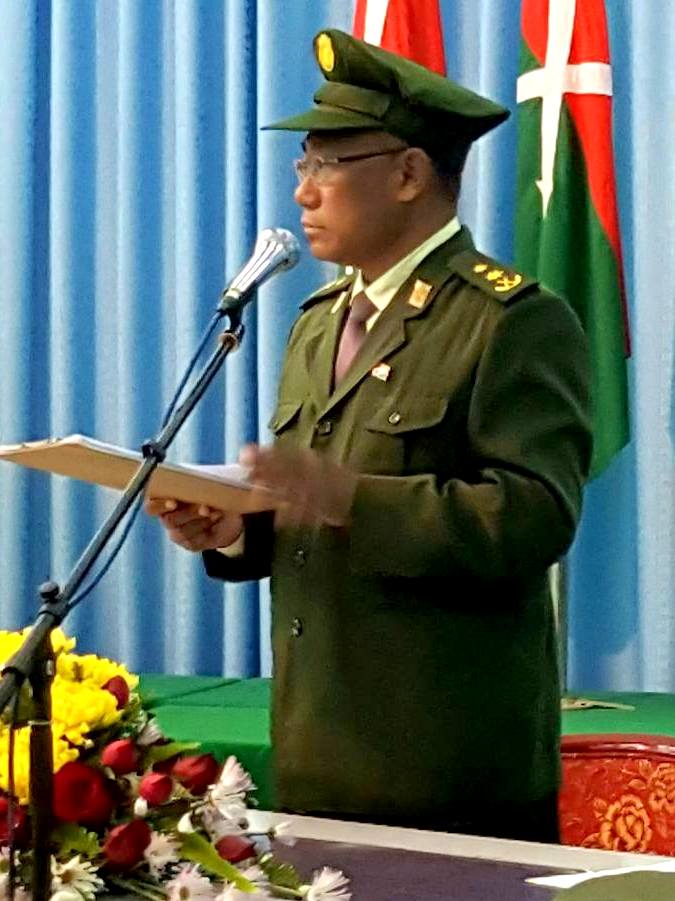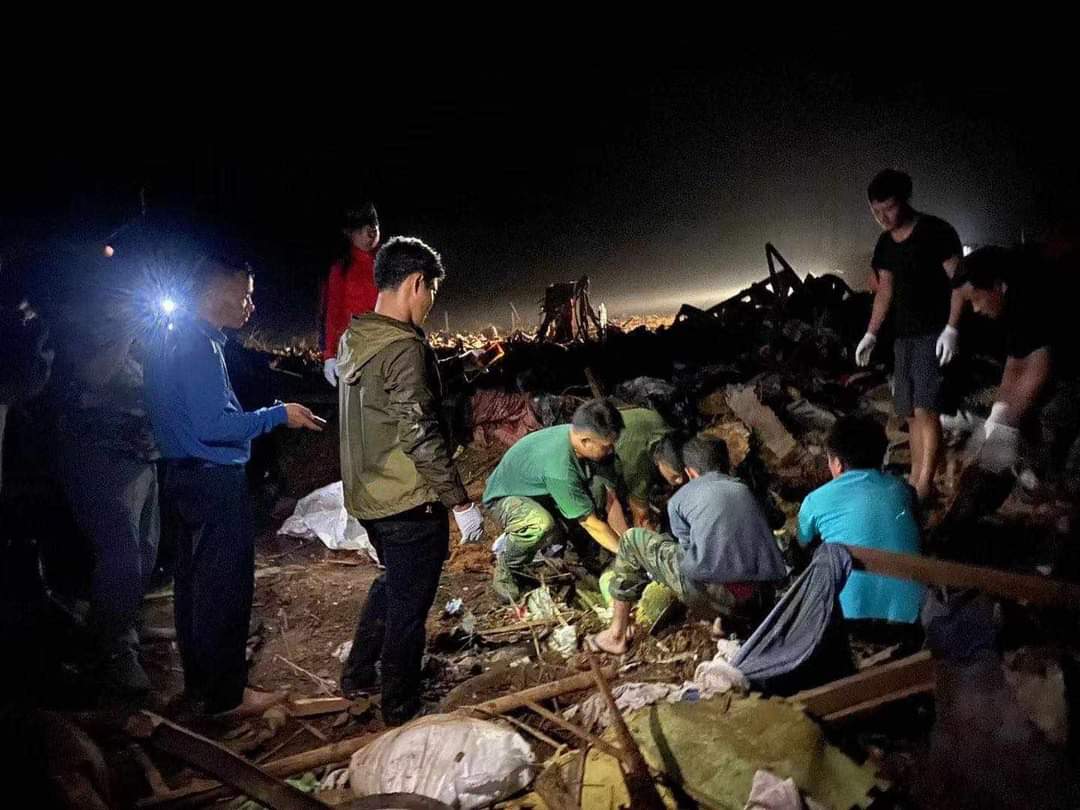Myanmar’s junta is preparing on Sunday to celebrate the eighth anniversary of the signing of the National Ceasefire Agreement (NCA) ahead of the first anniversary of the A’Nang Pa massacre in Kachin State and after Monday’s attack on a Kachin displacement camp.
At least 29 people, including 13 children, were killed and 57 injured at Mung Lai Hkyet village in Waingmaw Township on Monday night. The site is about 3km north of Laiza, where the Kachin Independence Army (KIA) has its headquarters. The armed group is fighting the junta.
The attack was denounced domestically and internationally, including by the civilian National Unity Government (NUG) and United Nations.
The junta denied involvement and blamed an explosion at an ammonium nitrate store at a KIA training camp near the village.
The KIA said explosives would never be stored near civilians.
The Irrawaddy spoke to KIA spokesman Colonel Naw Bu about Myanmar’s crisis.

Is there any more information about Monday’s attack?
The death toll has not increased. Most of the injured have been discharged from hospital with about 20 remaining.
Do you know how the attack was carried out?
Our investigation team found big and abnormal bomb fragments. We don’t know how big their drones were.
A normal drone couldn’t carry such large shells. There might have been a group of drones or a larger, unmanned aerial vehicle carrying strange and powerful shells.
What shell fragments were found?
The investigation team collected pieces. We are trying to identify them. There was a vehicle workshop at the site so they have struggled to separate tools from bomb fragments.
The junta blamed an explosion at a KIA ammonium nitrate store.
That’s just propaganda. We would never store arms and ammunition near a displacement camp. The junta lies repeatedly.
What assistance do the displaced people need?
There were over 100 homes in the camp. We asked how we could help reconstruct their shelters but they said they were too afraid to live there. They are traumatized and have lost relatives. We plan to set up a new camp elsewhere.
The junta celebrating the NCA’s eighth anniversary on Sunday. Have you been invited and does the regime have any plan for more peace talks?
The Kachin Independence Organization’s [KIO] central committee was invited to the event. I do not know what the committee decided but the military calls for peace while still attacking us.
The junta’s airstrike on the outdoor concert at A’Nang Pa in Hpakant Township was on October 23 last year. Do you think the Mung Lai Hkyet attack was timed to coincide with the anniversary?
The military always targets us every October because the KIO was established in that month. It tends to test new weapons against us.
It wants to scare civilians in our territory to weaken our support or make them demand we abandon the revolution.
The military targets civilians, launches airstrikes, shells schools, monasteries and churches and burns down villages across the country.
This week it targeted our civilians to divide us.

Some groups say the 2021 coup makes the NCA void. The KIO did not sign it but was it its position on the 2015 agreement?
The calls for talks are an attempt by the generals to get out of this crisis. The NCA is like a broken bridge. There is no way to pass.
The junta is trying to restore the NCA to divide the armed groups so it can target the NUG. The term “peace-building” is just a tactic in the civil war.
